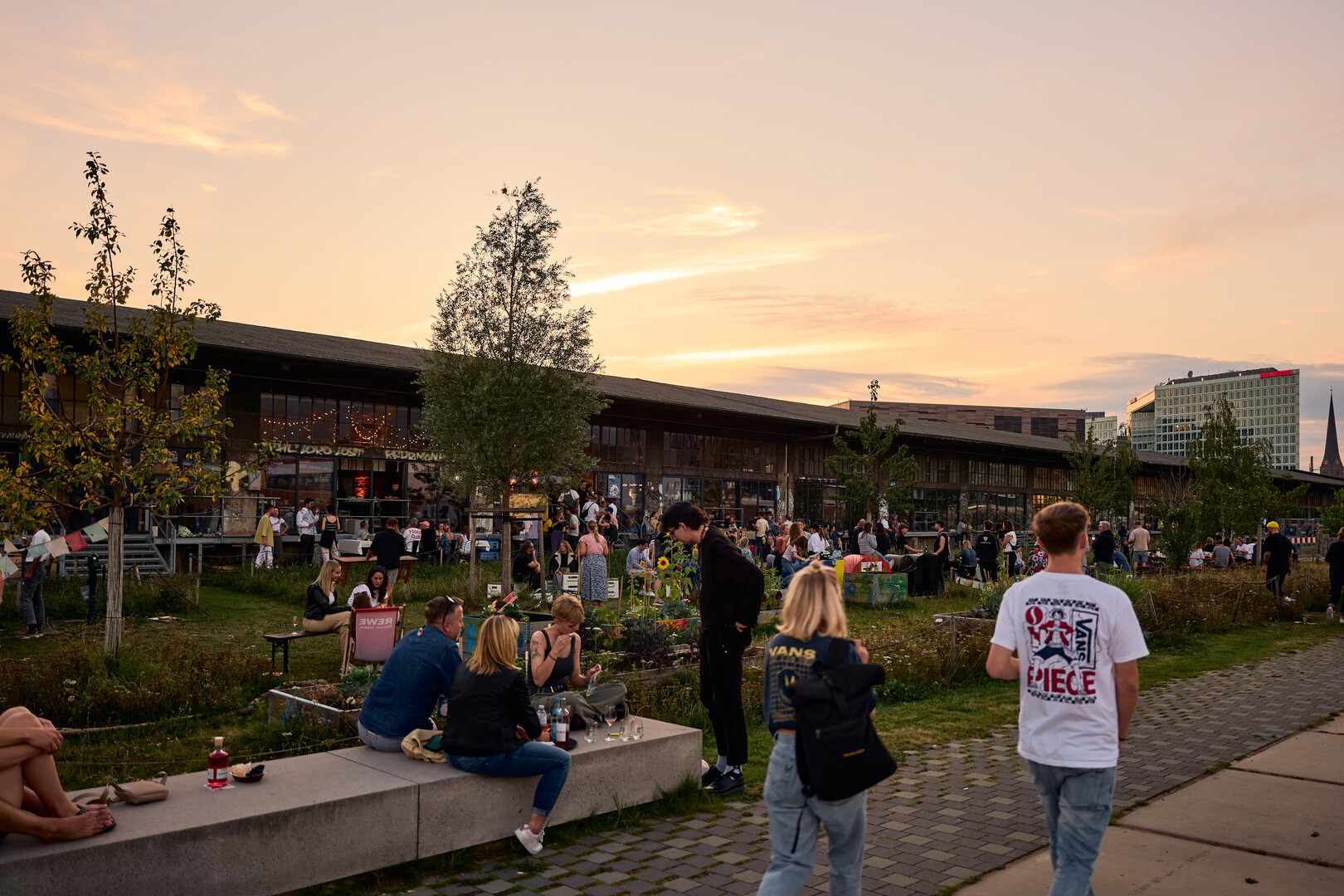"Interim uses are far more than a temporary solution. They can transform cities in the long term, generate new momentum and foster creative ecosystems," said Egbert Rühl, Managing Director of Hamburg Kreativ Gesellschaft. "They open doors to new target groups, allow new uses to be trialled and create addresses," he added. After three years, the results show how successful this can be. Around 90 spaces, from Altona to Bergedorf have been used temporarily. This equates to over 125 temporary uses across 28,000 square metres.
The Frei_Fläche scheme is helping professionals to find spaces in city centres through its creative use of vacancies. The Hamburg Kreativ Gesellschaft has put property owners in contact with creatives since 2021. Vacant spaces become temporary pop-up stores, studios, workshops or exhibition venues. This creative interim use is driving the transformation towards a diverse and vibrant (inner) city, and providing impetus for the subsequent use of existing buildings. A new publication entitled "More space for creative temporary use - innovative strategies and instruments for property management and urban development" gives insight into the multi-year scheme.
Creative interim use as a door opener
Frei_Fläche scheme
Launched in 2021 by the City of Hamburg, the Frei_Fläche scheme was initially intended to tackle the crisis triggered by the pandemic until the end of 2022. However, after three extensions, the funding scheme is set to end on June 30, 2025. Managed by the Hamburg Kreativ Gesellschaft, the scheme makes vacant retail space available to creative professionals on a temporary basis at a rate of €1.50 per square metre. Landlords receive a lump sum for operating and ancillary costs for the duration of the scheme. No rent is paid.

Katja Wolframm, Hamburg Kreativ Gesellschaft, talks to Hamburg News
The Hamburg Kreativ Gesellschaft is the largest urban creative industries development organisation in Germany and employs over 60 staff. Dr Katja Wolframm heads the Real Estate & Urban Development division and has been involved in the Frei_Fläche scheme from the outset. The Jupiter building in downtown Hamburg is one example of interim use. She revealed what it's all about in our Future Hamburg Talk. Wolframm also highlights the challenges and lessons learnt after more than three years of Frei_Fläche, and considers what creative professionals in Hamburg need.
Hamburg News: To what extent can interim uses stimulate the transformation of urban spaces?
Katja Wolframm: The Frei_Fläche scheme demonstrates how creatives can stimulate activity and showcase the potential of a place like this. This is important for both the city and the owner. It's good to know: "Aha! The address can do that, and it's still possible with the existing building."
Hamburg News: After three years of Frei_Fläche, what successes have you achieved, and what lessons have you learned?
Katja Wolframm: In the past, the city centre was not accessible as a workspace for certain groups of creative professionals, mainly due to the price. Requests for space were never really about the city centre. But now it's on the radar of creatives. Property developers are gradually realising that: "If I want to attract this group or certain companies, I also have to offer a variety of prices," in other words, mixed uses through a mix of prices. I think this scheme has proved so successful because ways of thinking have become more interlinked and experience has been gained.

Hamburg News: What do creative people in Hamburg need?
Katja Wolframm: We need larger spaces. Demand for space in the Oberhafen district, for instance, is huge. The close proximity of such districts is an added bonus. They create a kind of small cluster that generates synergies and a vibrant atmosphere that creative people need. Creativity thrives in the right environment. That's why long-term places and creative spaces are so important for a diverse city. If the city decides to keep the existing Oberhafen buildings and make them available to creative people, more and more creative businesses will set up shop on the other bank of the canal because of the spatial proximity. The Hochwasserbassin in Hammerbrook is another example of such a cluster.
Hamburg News: What comes after creative interim use in Hamburg?
Katja Wolframm: The Frei_Fläche scheme ends on June 30, 2025. However, its impact is far-reaching. It has given creatives access to central spaces and opened doors to key partners in the city centre, including retail space owners. These networks are now bearing fruit, as evidenced by the Satellit pop-up space in the Klöpperhaus container and the Fabric – Future Fashion Lab in the Galeria Passage. We are continuing the concept of creative interim use — visibly and innovatively in downtown Hamburg.
The Fabric, for instance, showcases sustainable fashion and urban production centrally. It features co-working spaces, a modern glass workshop, a showroom, pop-up shops and a café. It is a meeting and experimental space for new business models in the fashion design industry. The workshop trials digital technologies such as 3D printing, laser cutting and augmented reality to demonstrate alternatives to mass production and bring individual production steps back to the city.
We are also executing pilot projects for the "Ideen finden Stadt" funding scheme on behalf of the Ministry of Urban Development and Housing, and we are inputting our expertise to revive the city centre. This has established the creative industries and Hamburg Kreativ Gesellschaft as key players in the city centre.
Interview by Sarah Bischoff
sb/kk
Sources and further information
More
Similar articles

Creative industries foster democracy and innovation

Hamburg funding creative ideas for city centre

Future Hamburg Talks meet Katja Wolframm, Hamburg Kreativ Gesellschaft
